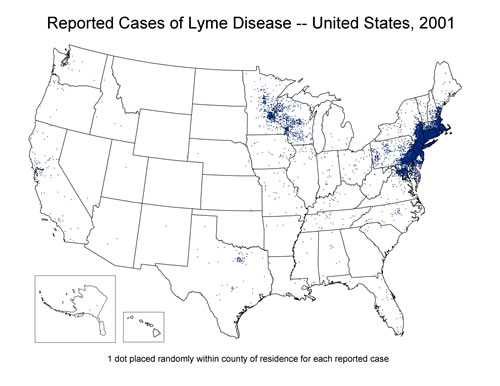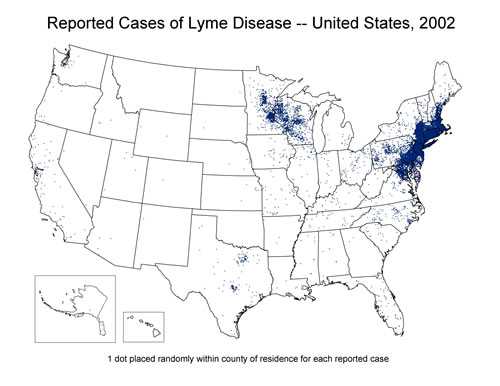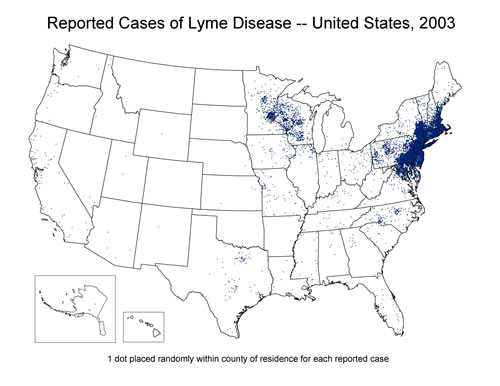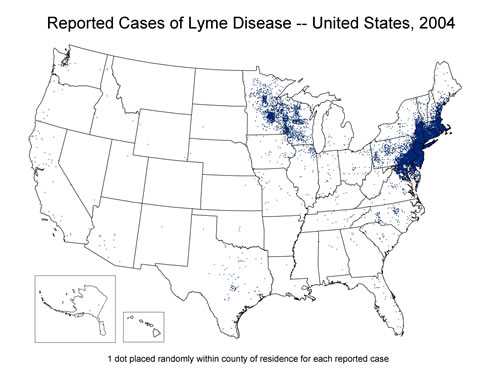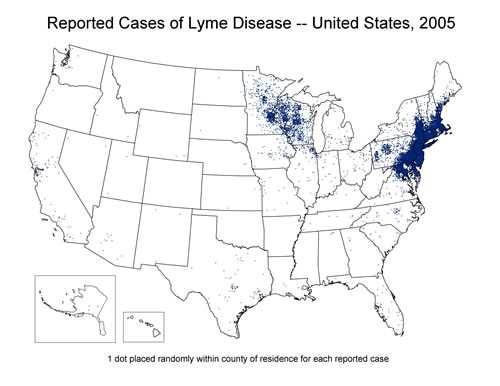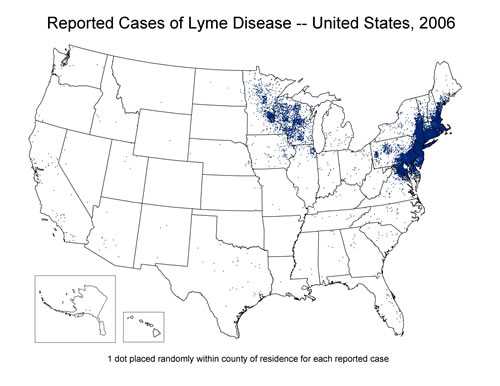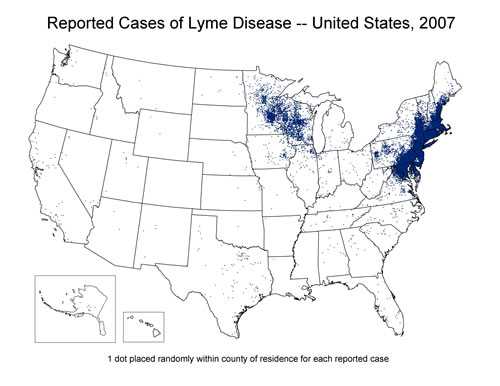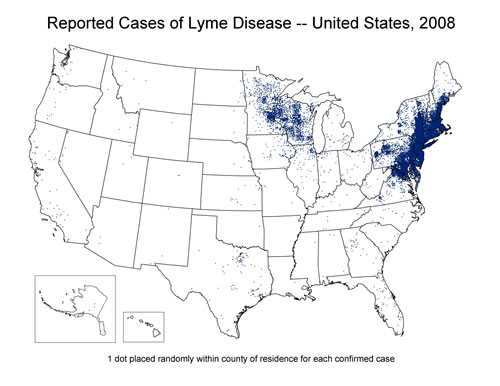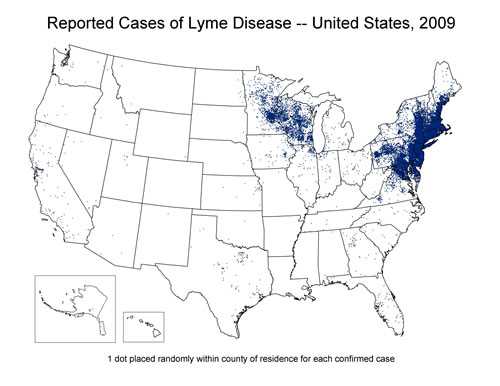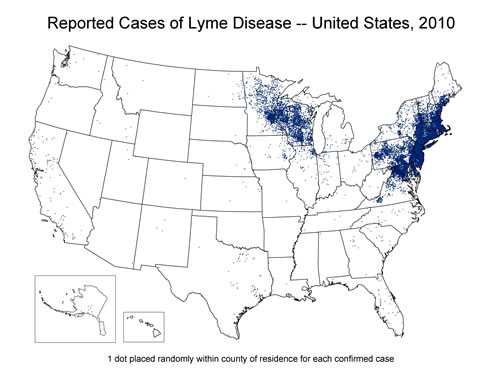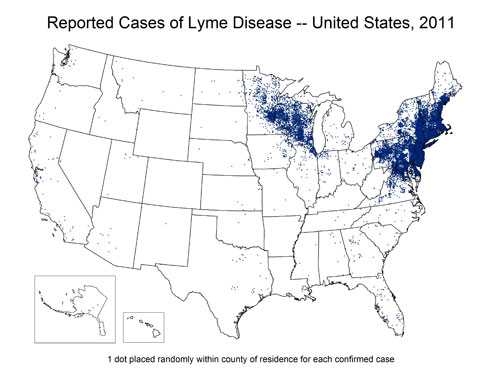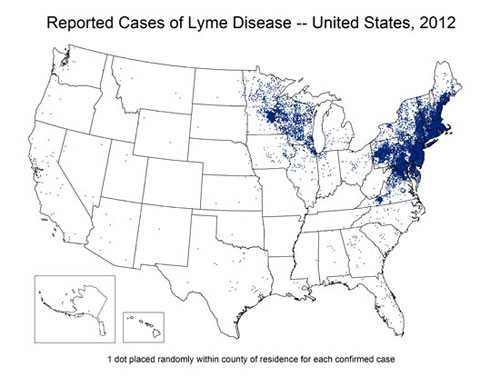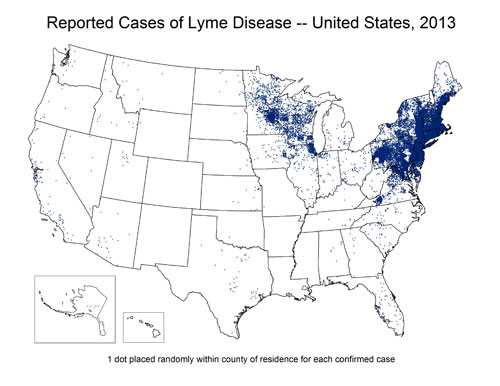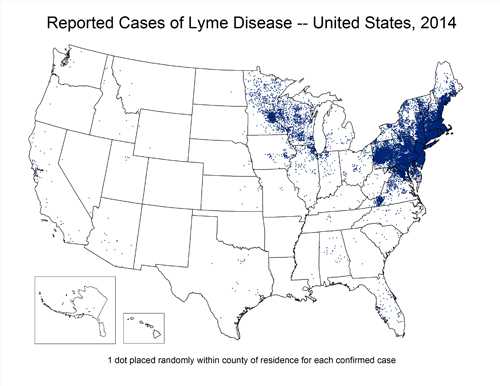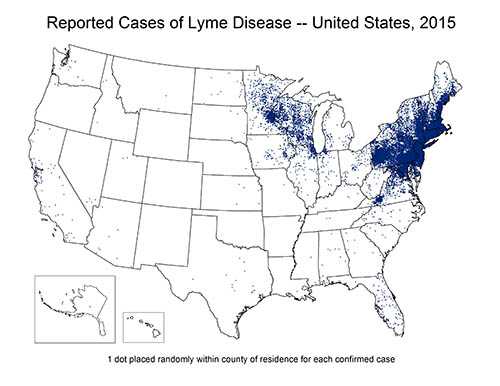Data and Statistics
Tables
- Cases by State, 2005-2015
- Incidence by State, 2005-2015
Graphs
- Cases by Year, 1995-2015
- Cases by Age and Sex, 2001-2015
- Cases by Month, 2001-2015
- Cases by Symptom, 2001-2015
Maps
- Reported Lyme Disease Cases, U.S., 2015
- Reported Lyme Disease Cases, U.S., 2014
- Reported Lyme Disease Cases, U.S., 2013
- Reported Lyme Disease Cases, U.S., 2012
Fast Facts
In 2015, 95% of confirmed Lyme disease cases were reported from 14 states:
- Connecticut
- Delaware
- Maine
- Maryland
- Massachusetts
- Minnesota
- New Hampshire
- New Jersey
- New York
- Pennsylvania
- Rhode Island
- Vermont
- Virginia
- Wisconsin
These states have areas where infected ticks are common. Infected ticks can also be found in neighboring states and in some areas of Northern California, Oregon and Washington.
Although Lyme disease cases are occasionally reported from most other states, this does NOT mean that infection was acquired in those states. Case reports reflect where a patient lives at the time of diagnosis, which can be different from the state where the patient was infected.
Lyme disease is the most commonly reported vectorborne illness in the United States. In 2015, it was the sixth most common Nationally Notifiable disease.
Lyme Disease Data File
To facilitate the public health and research community’s access to NNDSS data on Lyme disease, CDC has developed a public use dataset. This dataset provides the number of reported cases by county for the years 2000-2015. The 2000-2007 data reflect the surveillance case definition in place during that time. Data from 2008 to the present reflect the case definition which allowed for reporting of “confirmed” and “probable” cases. County codes of “999” represent “unknown” county of residence within each state. More recent case counts are not publicly available at this time.
- Understanding Lyme disease surveillance – – Please review before downloading data.
- County-level Lyme disease data from 2000-2015 Microsoft Excel file [Excel CSV – 207KB] ––Right–click the link and select “save”.
- Page last reviewed: December 19, 2016
- Page last updated: October 5, 2017
- Content source:


 ShareCompartir
ShareCompartir
